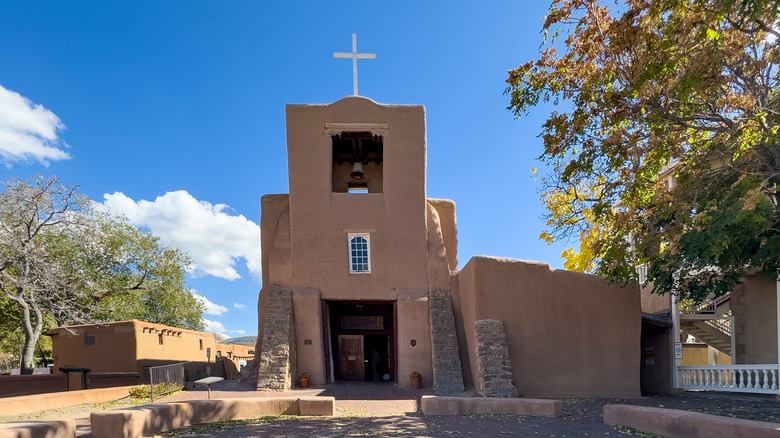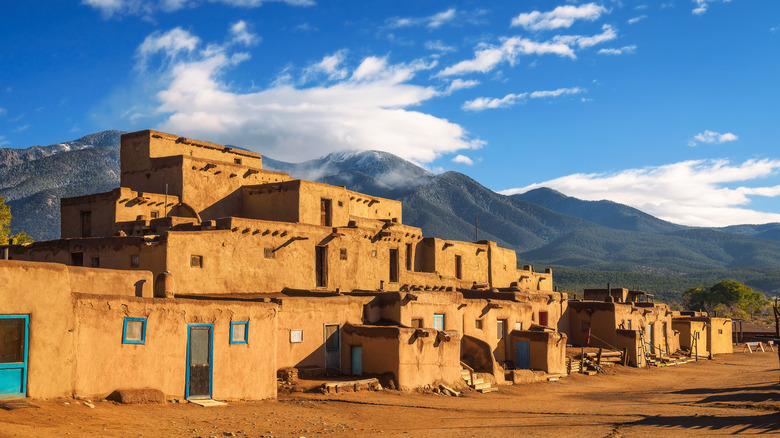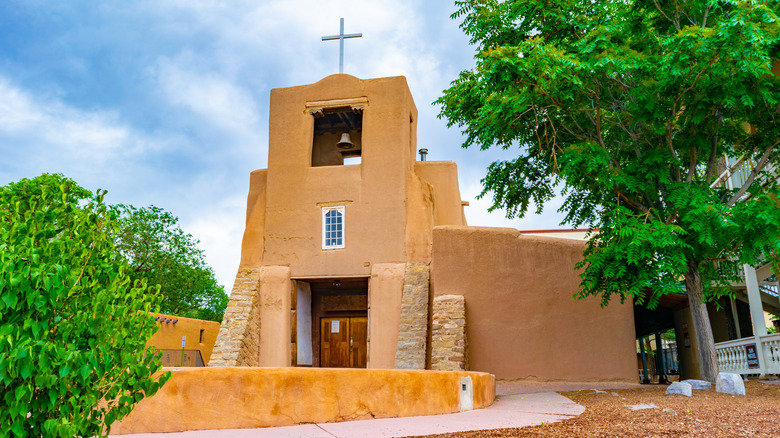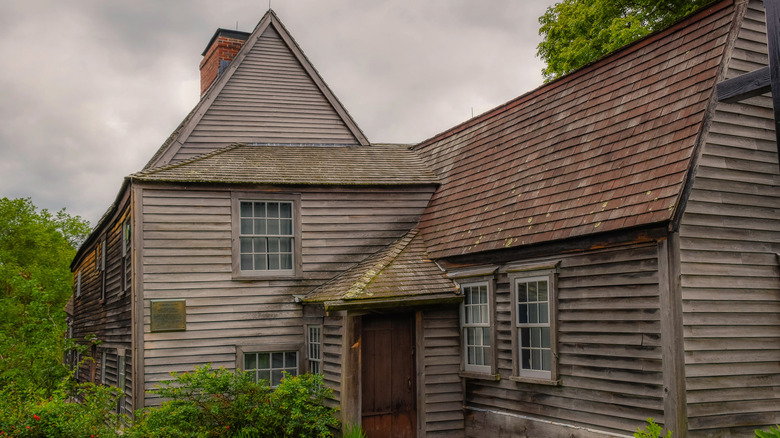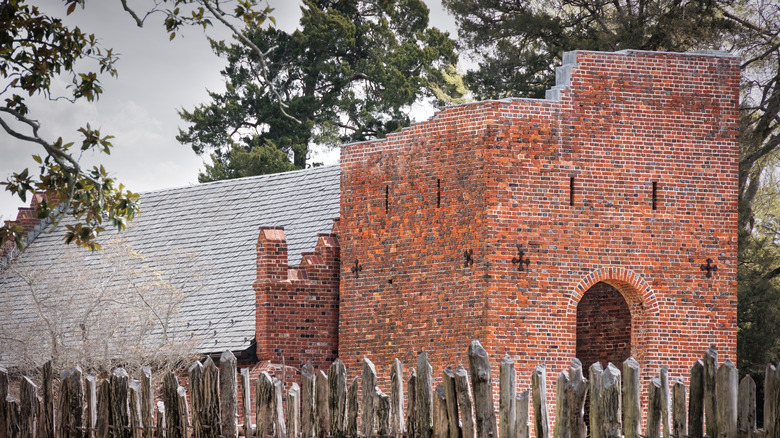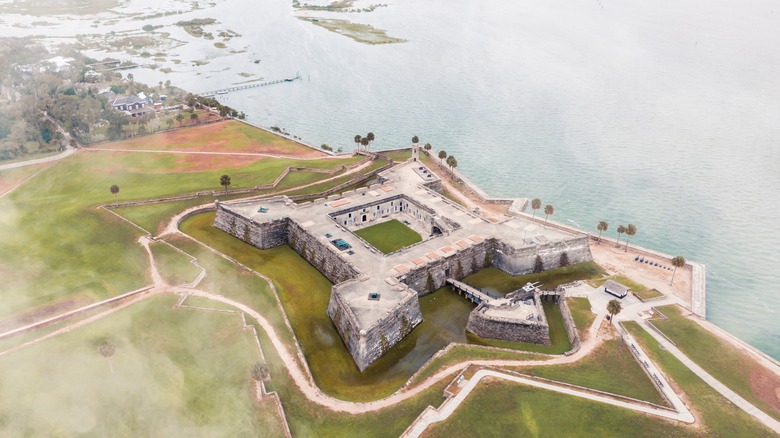The 5 Oldest Buildings You Can Visit In America
When traversing the vast and diverse landscape of the United States — all of its 3,794,083 square miles (the world's third-largest country by size!) — one might be inclined to think of its relatively 'young age' compared to the legendary and classical civilizations of Europe, Asia, and Africa. After all, none of the oldest cities in the world are located in America, the "New World." Indeed, the United States of America was born much later than other more archaeologically endowed countries that go way back to the B.C. years, as it only gained its independence from Great Britain and was officially founded on the fourth of July in 1776.
However, an ancient history predates this 18th-century unification of the U.S., and there is much to prove it. The American landscape is dotted with structures that tell stories of its early settlers, indigenous populations, and colonial past. Many of these are still intact and in relatively good condition; some are impeccably maintained and restored, while others stand as semi-preserved ruins. From old churches in Virginia and native communities in New Mexico to fortified castles in Florida and private homes in Massachusetts, this article will take you on a journey to discover five of the oldest buildings in America that you can still visit today, each offering an intimate glimpse into the country's history.
Taos Pueblo, New Mexico
Taos Pueblo, located in the Sangre de Cristo Mountains of northern New Mexico, dates back to the late 13th and early 14th centuries. Built by the Tiwa-speaking Puebloan people, Taos Pueblo is not a free-standing single building, but an entire community of homes and ceremonial buildings that have been continuously inhabited for over a millennium. It is the only currently living Native American community with around 150 residents that is both a UNESCO World Heritage Site and a National Historic Landmark.
The Pueblo consists of multi-storied adobe buildings made from earth, water, and straw, which have been maintained and preserved by the Taos people throughout generations. These structures, with their several-feet-thick walls and flat roofs made of pine and aspen supported by large timbers and packed with dirt, showcase building techniques that have stood the test of time. No electric or running water infrastructure exists within the Pueblo. The community is divided into two main complexes, Hlauuma (North House) and Hlaukwima (South House), both of which are still used as residences today.
Visitors to Taos Pueblo can experience both Native American history and living culture. Guided tours offer insights into the pueblo's history, traditions, and daily life, while local artisans sell handmade crafts, including pottery, jewelry, and textiles. Special events and ceremonies, such as traditional dances and feast days, allow visitors to witness the community's enduring spiritual practices. Without a doubt, Taos Pueblo is America's coolest and oldest desert town to add to your bucket list.
San Miguel Mission, New Mexico
San Miguel Mission, also known as the San Miguel Chapel, is the oldest church in America. Located in the historic district of Barrio de Analco, Santa Fe, New Mexico (the oldest state capital in the U.S.), it was built between 1610 and 1626 over 400 years ago. However, a chapel constructed in 1598 by Tlaxcalan Indians in the same location predates the San Miguel Chapel. What's more, archaeological records indicate that the building rests on an even earlier Pueblo settlement dating to the years 800 to 1300. The currently standing San Miguel Chapel was commissioned by Spanish Franciscans.
The adobe structure of San Miguel, with its rectangular nave and trapezoidal apse, has undergone several restorations and modifications over the centuries. Most notably, in 1710 after the 1680 Pueblo Revolt, in 1887 when the local community united to repair the damage, and touch-ups in 2008 with help from volunteers. Yet, it retains its historic and architectural integrity, with its original thick walls still standing. Its humble design reflects the practical and spiritual needs of the early settlers.
Inside, visitors can admire the beautifully crafted wooden ceiling and the 18th-century altar screen. The chapel also has a unique collection of religious artifacts and artwork; like a statue of Archangel Michael, animal-hide paintings, and a 798-pound bell which was added to the chapel's tower in 1856. To this day, the church hosts mass on the first Sunday of the month, as well as special events like musical performances.
Fairbanks House, Massachusetts
The Fairbanks House in Dedham, Massachusetts, is a remarkable example of early American colonial architecture and is the oldest known timber-frame house in North America. It was built between 1637 and 1641 by the commission of Jonathan and Grace Fairbanks, who came from England with their six children in 1633. The house, now a museum and part of the National Register of Historic Places, has been meticulously preserved to reflect its 17th-century origins, which offers a fascinating insight into the domestic life of early American settlers.
The Fairbanks lived there for eight generations until the last member of the family moved out in 1904. During those years, each of the family members left a mark on the house, like adding two full wings to the original construction, changes in wallpapers, larger windows, and an in-house workshop. After 1820, due to the financial difficulties of the family, no significant changes were made. The house never had modern luxuries like electricity, heat, or running water — it truly is a time capsule.
Visitors can explore the various rooms, including the kitchen, bedrooms, common areas, and even a cheese closet (which also functioned as a bathroom in the old days, but not simultaneously), all furnished with period-appropriate artifacts. Beware the ceilings are very low, the doorways are small, and everything is quite uneven. The museum provides guided tours, educational programs, and special events like the annual National Fairbanks Reunion, making it a must-visit East Coast destination for history buffs.
Jamestown Church, Virginia
Jamestown Church, located in Historic Jamestowne, Virginia, is a crucial site in early American history. Established in 1639, this historic building is the oldest English church still standing in America. It is situated on the site of the original James Fort, the first permanent English settlement in North America, founded in 1607. The current brick structure, called the Fourth Church, dates back to 1639.
It's built on the foundations of earlier churches that served the settlers, the first of which was built in 1607, the second in 1608, and then in 1617, all destroyed and rebuilt on the same site. The church took five years to build and was used by its congregation until 1750; when it was abandoned in favor of a new church 3 miles away. After the 18th century, the elements took their toll and the church fell to ruins, of which only the tower remains — the nave and 10 feet of the tower's former height have been ravaged by time.
But not all was lost, the Association for the Preservation of Virginia Antiquities and the National Society of the Colonial Dames of America restored the church to its modest glory. Visitors can explore the church and the surrounding historic site — a small town that appears to be stuck in time — to see the remains of the James Fort and a fascinating archaeological museum. If you decide to do this short, sweet, and scenic road trip through Virginia, you should make a stop here.
Castillo de San Marcos, Florida
Perched on the shores of St. Augustine, Florida, the Castillo de San Marcos looks like something that belongs in a mountain village in Italy or France, not in America. Constructed between 1672 and 1695, this formidable structure — 20 acres in all — is the oldest masonry fort in the continental United States, built to defend Spanish claims in the New World and to protect the settlement of St. Augustine from pirate raids and foreign invasions. Today, the Castillo de San Marcos is a National Monument preserved by the National Park Service.
The Castillo de San Marcos is an architectural marvel, designed like a classic star fort, also called bastion fort, a style which emerged 500 years ago to deal with the destructive capabilities of canons. Its thick, fire-resistant, and bullet-proof walls are made of coquina, a type of limestone derived from shell fragments abundantly found on Florida beaches that bond into a lightweight concrete material. It is thanks to this indestructible material that the Castillo still stands after over 300 years.
Visitors to the Castillo can explore the fort's well-preserved ramparts, bastions, and castmates, gaining insights into the lives of the soldiers who once garrisoned the fort. Reenactments and living history demonstrations bring the past to life, showcasing daily routines and military tactics including canon firings and weaponry demonstrations, of the 17th and 18th centuries. The fort also offers stunning views of the Matanzas Bay and the city of St. Augustine, worthy of their own exploration.
